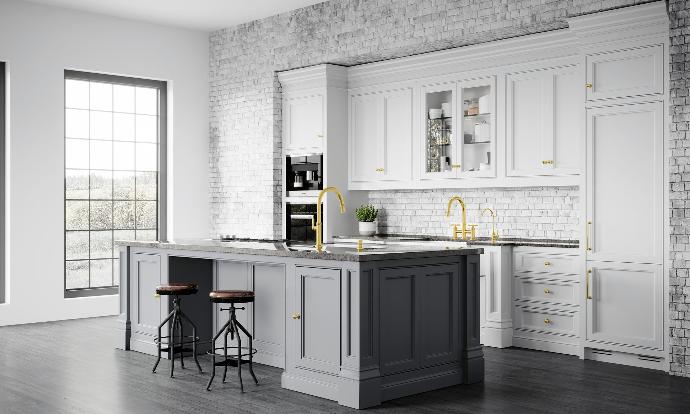Designing your kitchen may be an exciting renovation job, including everything from flooring to backsplashes to appliances. It's usually a pleasant but complex procedure with many moving parts; it's easy to overlook subtleties that can lead to tremendous problems later on—and may cause you to go over budget. We’ve consulted with some of our top designers, home builders and architects in the Vogt network to identify the kitchen makeover mistakes you should avoid. Keep reading to see our top list of things that break your dream reno.
Failure to prepare
The most common mistake most homeowners make during a kitchen makeover is failing to plan adequately. Successful kitchen redesign requires careful planning and preparation. Your primary focus should be on usability and lifestyle, then aesthetics. Will your kitchen be a gathering place? Do you plan on entertaining and cooking meals for the entire family? You must consider these things before picking fixtures and finishes based solely on looks.
Cost underestimation
How many times have you watched a home renovation show where the kitchen looks beautiful, but only because they went $15k over budget? Often, cost underestimation happens in relation to poor planning. Your best bet is researching everything from flooring to appliances and light fixtures. Shop around for the best value, and then leave yourself some wiggle room. It always feels better to deliver under budget than being hit with a costly renovation with unnecessary expenses. In relation to poor planning. Your best bet is to research everything from flooring to appliances and lighting fixtures. Shop around for the best value, but also leave yourself some wiggle room, a good best practice would be to leave about 15-20% of your budget for unexpected costs. It always feels better knowing that you have prepared yourself even for the worse case scenarios.
Wrong measurements
Remember that saying, measure twice, cut once? A similar approach should be taken when it comes to cabinetry and appliances. There's nothing worse than ordering high-end appliances, having them delivered, and being unable to install them because they're a quarter of an inch too tall/wide/deep for your cabinetry. Ensure you have the right cabinet specs, and that they work with the dimensions of your appliances. This also applies to your faucet and sink specs. The good thing about Vogt product, is that when you purchase their sinks, they also come with a template cutout to ensure that the exact specification is provided to your installers, this reduces errors, as being off by a half inch can make or break a reno.
Wrong flooring
More people are choosing hardwood floors for their kitchens over ceramic tiles. If you're going for wood, ensure it has the right finish or is pre-sealed. Another thing to consider is that hardwood doesn't provide the same traction as tiles. If you have children (or are an accident-prone adult), you might want to go with wood with a textured finish. The added bonus of textured finishes is that they conceal scratches and nicks better than smooth surfaces, and due to the amount of time spent standing in a kitchen, things are bound to fall on the floor. If you do opt for a smooth finish, use a decorative, anti-slip rug in front of the sink, as this area often becomes wet (and slippery)!
Not Abiding by the Golden Rule of the Chef's Triangle

Even large, elegant kitchens need to work logistically — in other words, the refrigerator, stove, and sink should form a "chef's triangle," which makes it easy to manoeuvre when cooking.
Ignoring lighting needs
Kitchen lighting contributes both aesthetically and practically. Lighting materials, finishes, and colours, as well as shape and design, are just as important to your kitchen design as cabinetry, flooring, and appliances. Well-designed kitchens should feature three different types of lighting: general lighting for overall illumination, targeted work lighting (over the sink, island, and stove), and accent lighting. A good tip is to make a lighting plan to address all your needs, from cooking to eating and entertaining.

Incorrectly wired kitchen outlets
The wrong wiring in your kitchen or insufficient outlets can pose a safety risk. Kitchens should have at least two, but ideally three accessible electrical outlets on dedicated 20 amp outlets and counter outlets. Stretching cords from electrical appliances run the risk of electric shock and are also a tripping hazard.
Bottom line
Avoiding the mistakes mentioned will set you on the right path for a successful kitchen renovation. It's always helpful to seek the advice of a professional interior designer who can help alleviate the stress associated with kitchen design. And remember, the kitchen isn't the only place where a single mistake can ruin an entire renovation — stay tuned because next month, we'll discuss bathroom mistakes to avoid.